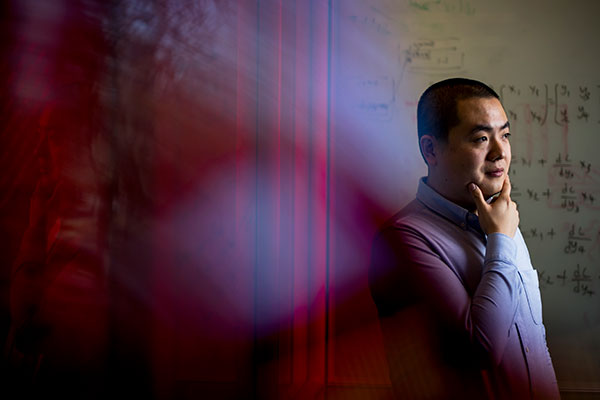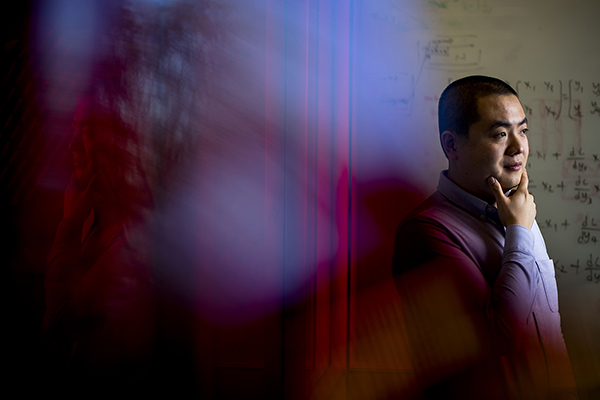ECE Student Awarded Patent

ECE PhD student Yifan Sun has been awarded a US patent while completing his co-op at EMC. This patent is only 1 of 5 patent applications that have been submitted by EMC, listing Yifan as a co-inventor. Yifan Sun is a member of the Northeastern University Computer Architecture Laboratory.
Abstract Source: USPTO
A method implemented by a server enables sharing of GPU resources by multiple clients. The server receives a request from a first client for GPU services. The request includes a first block of GPU code of an application executing on the first client. A first task corresponding to the first block of GPU code is enqueued in a task queue. The task queue includes a second task that corresponds to a second block of GPU code of an application executing on a second client. The server schedules a time for executing the first task using a GPU device that is assigned to the first client, and dispatches the first task to a GPU worker process to execute the first task at the scheduled time using the GPU device. The GPU device is shared, either temporally or spatially, by the first and second clients for executing the first and second tasks.
Source: News @ Northeastern
A student went off to do a co-op at a major tech firm. He came back with a patent.
by Debora Almeida, December 14, 2018
When Northeastern doctoral student Yifan Sun was working on co-op as a software engineer at Dell EMC in 2016, he invented a method to enable multiple clients to use the same graphics processing unit simultaneously in order to save money.
Now, Dell EMC has received a patent from the United States Patent and Trademark office for Sun’s project.
“In the industry today, there’s a lot of research going on in this exact same space,” said Jack Harwood, a senior distinguished engineer at Dell who supervised Sun’s work, “but at the time it was very novel.”
Graphics processing units are computer chips that perform rapid mathematical calculations to render video, images, and animations for mobile phones, personal computers, game consoles, and other high-tech devices.
Sun said that they are costly to install and maintain, but their ability to process mathematically-intensive tasks makes them particularly useful for large scale physics simulations, self-driving cars, and artificial intelligence applications.
Sun’s invention involved relocating the graphics processing unit from an individual employee’s computer to a server in the company’s data center. When users want to complete a task, they send a request to a centralized graphics processing unit. The server then sends the completed results back to the user, freeing up the graphics processing unit to complete another request.

Before Sun invented this method, companies had to install expensive graphics processing units in the personal computers of each of their employees, but now they need just one centralized graphics processing unit.
Sun created the code and then helped to test the code before EMC filed three patents for the project, two of which are still awaiting approval.
“Yifan was disciplined in his work, documentation, and coding style,” said Harwood. “He took it upon himself to design it and now we have a team of six people continuing to work on his project.”
Harwood said that Dell EMC now offers a subscription service based on Sun’s invention: Clients pay to use software that the company created after Sun completed his co-op to process computing requests from multiple users through a single graphics processing unit.
“It’s been two years now, but it feels great to to have an acknowledgement of my hard work on that project,” said Sun. “I’m happy to see it turned out to something.”
